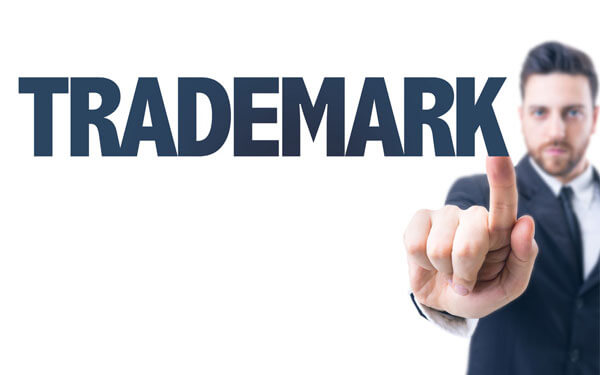This article is written by Harshita Agrawal. It explores the significance and features of trademarks, with a specific focus on Section 103 of the Trade Marks Act, 1999. The article delves into the penalties associated with the application of false trademarks, misleading trade descriptions, and other related violations.
Table of Contents
Introduction
The Trade Marks Act, 1999 provides the owners of the trademark with the exclusive right to use their marks, thereby safeguarding them from unauthorised use or any similar marks that may create confusion among customers or be used for the purpose of deceiving customers. The purpose of the Trade Marks Act is to protect the rights of trademark owners and their property, as well as to ensure legal protection for enforcing these rights. The Act empowers the police to make an arrest for the infringement of a trademark, clearly defining what constitutes such infringement.
It also provides penalties and punishments for offenders, extends the duration of the registration period, and allows for the registration of non-traditional trademarks. This legal protection ensures the integrity of the business and upholds consumer trust. As we delve further into the article, we will explore the scope and legal implications of violating the provision indicating penalties under the Act for applying false trademarks or descriptions therein and the judicial precedents therein. The article also explains its importance in maintaining the rights and interests of trademarks in India.
All we need to know about trademark
Before 1940, India did not have specific laws related to trademarks. Issues concerning the infringement of both registered and unregistered trademarks were addressed under Section 54 of the Specific Relief Act, 1877, while matters related to registration were handled under the Registration Act, 1908. The introduction of the Trade Marks Act in 1940 marked a significant step towards addressing these issues more effectively. This Act brought attention to the need for protecting trademark rights and ensuring their proper use in trade. Later, the Trade Marks Act, 1999 replaced the earlier Trade and Merchandise Marks Act, 1958 to provide better protection and prevent the deceptive use of marks on goods. The Parliament enacted this new legislation to comply with the TRIPS (Trade-Related Aspects of Intellectual Property Rights) Agreement, as recommended by the World Trade Organization.
Meaning of trademark
As defined under Section 2(1)(zb) of the Act, a trademark is a symbol or design that can be visually represented and is capable of distinguishing the goods or services of one person from those of others. This may include the shape of goods, their packaging, or a combination of colours.
In relation to Chapter XII (excluding Section 107), a trademark refers to a registered mark or a mark used in business to indicate a connection between the goods or services and the person having the right as proprietor to use the mark.
For other provisions of this Act, a trademark refers to a mark used or intended to be used in relation to goods or services for the purpose of indicating a connection between the goods or services, as the case may be, and the person with the right to use the mark, whether or not the identity of that person is indicated. This also includes certification trademarks and collective marks.
Essentials of a valid trademark
The essential criteria for a valid trademark are as follows:
- The trademark must consist of a symbol, word, or combination that the court or trademark office deems eligible for protection.
- It must be used for commercial purposes.
- It must identify and differentiate the goods, products, or services of one party from those of others.
- It must be unique.
Misuse of trademark
Any misuse of the registered trademark is penalised under the Act. Chapter XII of the Trade Marks Act, 1999 deals with offences, penalties, and procedures. This section deals with the consequences of using false trademarks, tampering with a registered trademark, misleading consumers, and representing a false trademark. The primary purpose of this chapter is to protect the rights of the true owners of the trademark and to maintain trust in the marketplace, ensuring that all trademarks are used in a correct manner. It upholds the credibility of trademarks and establishes the proper legal consequences for deceiving customers. A brief overview of the penalties lying under various sections of Chapter XII of the Act.
Section 103 of Trade Marks Act, 1999
Section 103 of the Trade Marks Act 1999, outlines the penalties for applying false trademarks, trade descriptions, and related offences:

- Falsifying a trademark;
- Falsely applying a trademark to goods or services;
- Making, possessing, or using any tool, machine, or other instrument with the intent to falsify a trademark;
- Applying a false trade description to goods or services;
- Misrepresenting the country of origin, details of the manufacturer, or any required information under Section 139 by providing false indications of such country, name, place, or address;
- Tampering with, altering, or removing an indication of origin on goods where such indication is required under Section 139;
- Causing any of the above actions to be committed
The punishment for these offences includes imprisonment for at least six months, which can be extended up to three years, and a fine between fifty thousand and two lakh rupees unless the person can prove they did not intend to deceive. However, if there are special reasons, the court may choose to give a lighter sentence, such as less than six months in jail or a fine of less than fifty thousand rupees.
In the landmark case of Cadbury India Ltd. vs. Neeraj Food Products (2001), the court held that the accused, Neeraj Food Products, was misleading customers by using deceptively similar trademarks, thereby violating the provisions of Section 103 of the Trade Marks Act, 1999. The court ordered penalties for the infringement and ensured the protection of trademark rights from false trademarks.
Objective of Section 103 of Trade Marks Act
Section 103 deals with penalties for applying false trademarks, trade descriptions, and related offences. The main objectives of this provision are to protect the interests of the customers, maintain the integrity of the marketplace, and ensure safeguarding of the rights of each customer by performing fair trade practices. The main aim is to prevent any kind of deception that misleads customers regarding the quality and origin of products.
This section ensures that only those who have a certified legal right to a trademark can use it, thereby maintaining the authenticity of goods and services. Violations of Section 103, including illegal use of a trademark or any kind of resemblance towards the registered trademarks, are penalised to ensure that the rights of the brand owners are upheld. These penalties include fines and imprisonment, intended to maintain the quality and safety of products and punish those engaged in unethical activities.
Clause-wise explanation
Section 103 outlines various clauses that are designed to address and penalise different forms of falsification and misrepresentation of trademarks. Each clause addresses specific illegal activities that undermine the integrity of trademarks and mislead consumers. Here is a clause-wise explanation that provides a detailed breakdown of the offences covered under this section:
- Clause (a): Falsifies any trademark
This clause refers to any act of altering or imitating a registered trademark to make it look like the original without authorisation. For example, if a person makes any changes to a logo to make it resemble a well-known trademark, this would violate the clause. It is illegal to change any registered trademark to ensure the authenticity of the product and prevent deceiving customers.
This clause involves using a trademark on goods or services without having the right to use that trademark, thereby misleading consumers about the authenticity of the product. For instance, if a company uses a well-known trademark to deceive customers about the authenticity of the product, it violates this clause. The key application is to prevent unauthorised use which leads to confusion in customers.
- Clause (c): Making, disposing of, or has in his possession any tool for falsifying a trademark
This clause targets those who make, sell, or possess tools or equipment used to produce counterfeit trademarks. For example, if a person is caught using machinery or related products to counterfeit trademarks, then he/she is violating this clause. The application of this clause seeks to eliminate tools that disrupt the entire supply chain of the related products thereby used.
- Clause (d): Applying a false trade description to goods and services
This clause involves putting misleading or incorrect descriptions on goods or services to deceive consumers about their nature, quality, or origin. For example, if a company falsely describes certain goods to deceive customers when in reality the origin of the said product was somewhere else, this leads to the violation of the said provision and disrupts the transparency allowed for the customers.

- Clause (e): Applying a false country of origin or details of the manufacturer
This clause addresses false labelling regarding the country of origin or the manufacturer of goods as required under Section 139. For example, if a product is manufactured somewhere else or its origin belongs to a certain different place and the product is labelled with a false origin or manufacturer’s details, it leads to a violation of this provision. This allows the customers to make informed decisions.
- Clause (f): Tampering with, altering, or removing an indication of origin
This clause involves tampering with or removing any required indication of origin that should be applied under Section 139. For example, if someone removes a sign that indicates the origin of a product and labels the product with a false origin to deceive the customers in said way to make them believe in a different origin, then this involvement is a chain of falsification. Here, the involved person would be held accountable. The provision addresses not only those who directly commit such an offence but also any kind of indirect offences that undermine the integrity of the product or marketplace.
- Clause (g): Causing any of the above-mentioned offences
This clause includes anyone who assists or encourages any of the actions mentioned in the previous clauses. The aim of the application of this clause is to make sure that all individuals involved in the chain of falsification of trademarks or deception of customers are held accountable, not just those directly committing the offence.
The penalties for these offences include imprisonment for a term not less than six months, which may extend up to three years, and a fine of not less than fifty thousand rupees. However, the court may reduce the sentence for adequate and special reasons.
Related provision : Section 139 of Trade Marks Act, 1999
Since clauses (e) and (f) of Section 103 talk about Section 139, it is only relevant to explain this provision. Section 139 deals with the power to require goods to show an indication of origin. The section states as follows:
- The Central Government may, by notification in the Official Gazette, require that certain imported or locally made goods, from a date as may be appointed by the notification (not being less than three months), must bear an indication of where they were made or the name and address of the manufacturer, or the person for whom the goods were produced.
- The notification may specify how the indication shall be applied, whether directly on the goods themselves or by other means, and the times or occasions when the indication must be present, such as during importation or at the time of sale, whether wholesale, retail, or both.
- A notification under this section shall be issued unless an application is made by persons or associations that significantly represent the interests of dealers, manufacturers, producers, or users of relevant goods, or unless the Central Government is otherwise convinced that it is necessary to issue the notification is necessary in the public interest, with or without inquiry as the Central Government may deem fit.
- The provisions of Section 23 of the General Clauses Act, 1897 shall apply to the issue of the notification under this section in the same manner as they apply to the making of a rule or bye-law, which require prior publication.
- Any notification issued under this Section shall not apply to goods manufactured or produced outside the territorial limits of India and imported into India, provided that at the time of importation, the Commissioner of Customs is satisfied at the time of importation that the goods are intended for exportation, whether after transshipment in or transit through India or otherwise.
The case of Cadila Healthcare Ltd. vs. Cadila Pharmaceuticals Ltd. (2001) involved allegations of false representations related to trademark records and documents, questioning the status and ownership of certain trademarks. The case focused on violations of the provisions of Section 139 and the penalties laid therein for failing to comply with regulations concerning the maintenance of trademark records. The court held the accused liable and ordered them to take corrective measures. The court also mandated that they be accountable for their actions to ensure fair competition and protect the rights of trademark owners.
Relevant case laws

Piyush Subhashbhai Ranipa vs. The State of Maharashtra (2021)
Facts of the case
In Piyush Subhashbhai Ranipa vs. The State of Maharashtra (2021), the complainant lodged an FIR against the accused for the commission of an offence under Section 103 of the Act. Consequently, the accused filed for anticipatory bail.
Issue
Whether the offence under Section 103. of the Act is a bailable offence.
Judgement of the case
The single bench of the Bombay High Court after hearing the contention of the parties and referring to other previous decisions of the court on the same issue including the case of Nathu Ram v The State of Rajasthan (2021), held that offences that are punishable with imprisonment for up to 3 years are non-bailable since imprisonment of exactly 3 years can be imposed for such offences. Accordingly the court by holding that since the imprisonment for an offence under Section 103 is up to 3 years, it is a non-bailable offense and rejected the anticipatory bail.
Shivlal vs. State & Anr (2013)
Facts of the case
In the case of Shivlal vs. State & Anr. (2013), Shivlal was accused of selling fake cement bags under the well-known brand name, J.K. Cement. After the officials came to know of the said offence, they seized the products and charged him under Section 103 of the Trade Marks Act, 1999. After the investigation was complete the police filed the charge sheet before the Trial Court under Section 420 IPC read with sections 103 and 104 of the Act. The Trial Court ordered the framing of charges, aggrieved by which the petitioner/accused filed for revision before the Session Court. However, the Session Court dismissed the revision petition. Consequently, the petitioner preferred the criminal appeal before the High Court of Judicature for Rajasthan
Issue
Whether the Trial Court erred in framing charges against the accused for an offence under Sections 103 and 104 of the Act read with Section 420 of the IPC.
Judgement of the case
The court examined the contentions of the petitioner and the provisions contained under Section 115 of the Act in relation to Section 103 of the Act. After such examination, the Court held that the use of a false trademark with the intention to deceive consumers is a cognisable offence under this section. When the police officer had received information from the respondent with regard to the commission of offences as provided under sections 103 and 104 of the Act, which are cognizable, then no fault can be found in the action of the said police officer in raiding the premises and seizing the goods having a fake trademark. It has been established that whenever the police officer receives information regarding the commission of a cognizable offence, Section 154 of the CrPC authorises him to receive any such information and Section 156 of the CrPC empowers him to investigate the case involving a cognisable offence. Therefore, the court held that since the offence under Section 103 of the Act is congnisable offence, Section 115 of the Act can not restrict the power of the police officer to receive information regarding the commission of an offence, search the premises and seize the goods as per the procedure provided under Chapter XII of the CrPC.
Prateek Chandragupt Goyal vs. The State of Maharashtra and Anr. (2021)
Facts of the case
In the case of Prateek Chandragupt Goyal vs. The State of Maharashtra and Anr (2021), the FIR was filed by the respondent against the petitioner on the ground that he had committed an offence under Section 103 of the Act by falsely applying trademark of Sakal Group in two articles authored by him and published in the news portal called ‘Newslaundry’. The trademark was printed on the two articles written and published by the petitioner.
Issue
- Whether the articles written by the petitioner, wherein the alleged trademark was printed fall under the categories of goods and services as defined under Section 2(j) and 2(z).
- If so, whether applying a trademark resembling a registered trademark could be said to have falsely applied with the intent to deceive the customer as provided under Section 103.

Judgement of the case
The FIR was filed for an alleged offence under Section 103 of the Trade Marks Act, 1999. The court held that the articles that were written and published by the petitioner neither qualify as goods nor as services. On the basis of this, the court further held that merely applying a mark resembling a registered trademark on the articles authored and published by the petitioner in the newspaper does not “fit into the definition of false application of the trade mark in relation to goods or services”. Therefore, the use of mark in such a manner would not be sufficient to constitute it an offence. It should be proven that the mark was used with fraudulent intent to cheat the consumers. The intention must be to mislead customers or create confusion among them in order to prove mens rea under this section.
Conclusion
Section 103 of the Trademarks Act, 1999 aimed at safeguarding the interests and rights of consumers. It also highlights the consequences of applying false trademarks and the penalties imposed therein either on individuals or entities to prevent the unauthorised use of a trademark that is already registered or a mark that is deceptively similar to a registered trademark. The Section concludes that trademarks are not mere commercial symbols but act as foundational pillars of the business. It seeks to prevent violations of registered trademarks to ensure the value of the business and preserve the rights withheld therein.
Frequently Asked Questions
Which courts have jurisdiction under Section 103 of the Trade Marks Act, 1999?
Under Section 103 of the Trade Marks Act, 1999, the High Court has jurisdiction over matters related to trademarks, including cases of infringement of trademarks or offences related thereto as per the provisions of the Act. The jurisdiction of the court generally lies either where the incidents have taken place or where the registered office of the defendant of the said case is located.
How does Section 103 of the Trade Marks Act, 1999 affect owners and manufacturers?
Section 103 of the Trade Marks Act, 1999 does not directly affect the owners and manufacturers. However, it safeguards the rights and interests of the owners of the related trademarks and protects the individuality of their products. They have to follow the procedures and requirements set out in the Act.
References
- https://blog.ipleaders.in/the-trade-marks-act-1999/
- https://blog.ipleaders.in/what-is-a-trademark/
- https://www.khuranaandkhurana.com/2021/04/21/offences-under-copyright-act-and-trade-marks-act-bailable-or-not/
Students of Lawsikho courses regularly produce writing assignments and work on practical exercises as a part of their coursework and develop themselves in real-life practical skills.
LawSikho has created a telegram group for exchanging legal knowledge, referrals, and various opportunities. You can click on this link and join:
Follow us on Instagram and subscribe to our YouTube channel for more amazing legal content.
 Serato DJ Crack 2025Serato DJ PRO Crack
Serato DJ Crack 2025Serato DJ PRO Crack










 Allow notifications
Allow notifications


